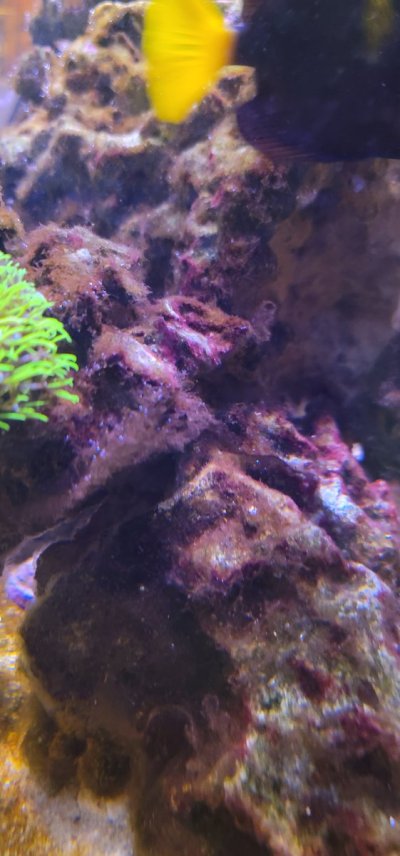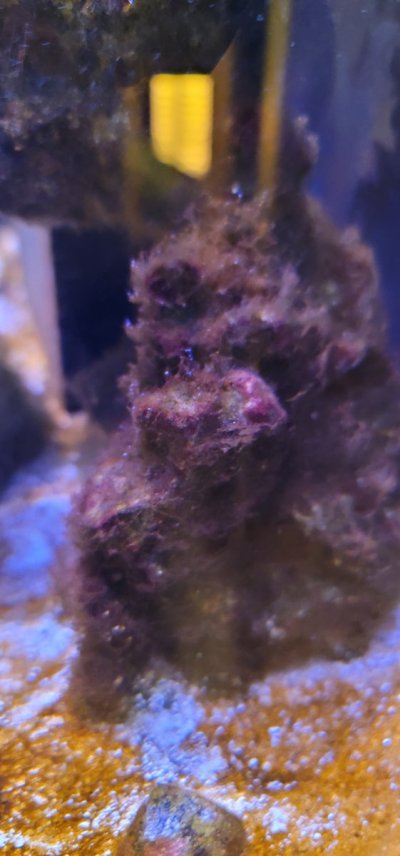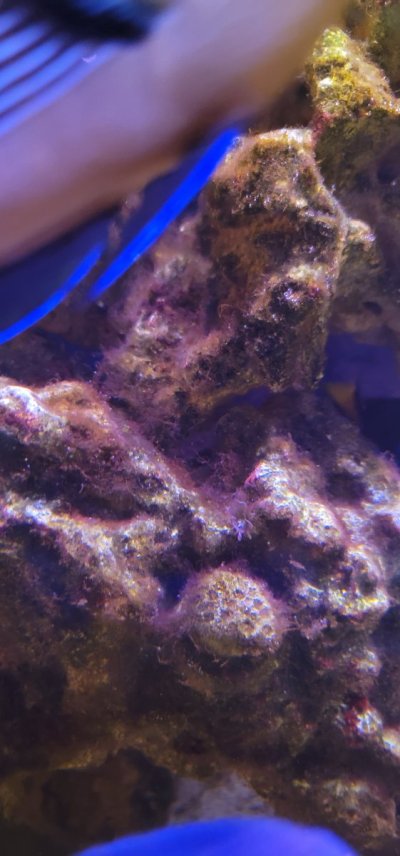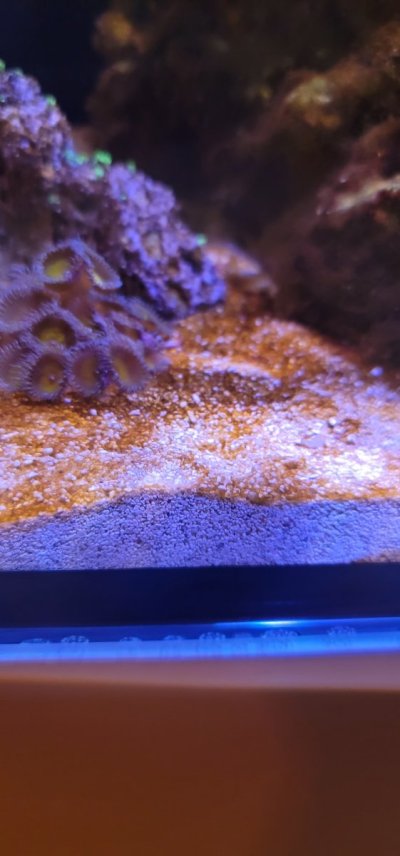I'm currently in a full on battle with whatever type of Algae or Bacteria this is in my reef tank. I think it's Cyanobacteria but my twice failed Chemiclean treatment has me thinking it could be something else. It looks redish and doesn't have that disgusting Diatoms look to it but who knows. Either way I'm determined to defeat this!!
What I've tried so far, all failed.
Chemiclean
Weekly water changes of 15 gallons
Carbon
Changing my filter floss every two days
Implemented a clean up crew for the first time:
2 Emerald Carbs
15 Hermit Carbs
5 Nassuras Snails
5 Mexican Turbo Snails
5 Trocus Snail
1 Conch Snail
2 Peppermint Shrimp
The clean up crew looks like the can keep this stuff away once it's gone. However they cannot eliminate the problem at the scale its currently at.
Tank: Redsea 250
Alkalinity 11.2 dkh
Calcium 500 ppm
Magnesium 1470 ppm
Nitrates 25ppm
Nitrite 2ppm
Phosphates 0ppm
Salinity 1.027
Temp 77 Degrees
Equipment:
Protein Skimmer
Algae Scrubber
Tunze Auto top off
Two MP10s
Salt Redsea Pro
I tried dosing Nopox but that didn't really help.
I'm open to all suggests! First do you'll think this is Cyano?
Also this stuff has started killing my poor corals by covering them up. You can see the Skelton of my Gonipora in photos. *Sad face




What I've tried so far, all failed.
Chemiclean
Weekly water changes of 15 gallons
Carbon
Changing my filter floss every two days
Implemented a clean up crew for the first time:
2 Emerald Carbs
15 Hermit Carbs
5 Nassuras Snails
5 Mexican Turbo Snails
5 Trocus Snail
1 Conch Snail
2 Peppermint Shrimp
The clean up crew looks like the can keep this stuff away once it's gone. However they cannot eliminate the problem at the scale its currently at.
Tank: Redsea 250
Alkalinity 11.2 dkh
Calcium 500 ppm
Magnesium 1470 ppm
Nitrates 25ppm
Nitrite 2ppm
Phosphates 0ppm
Salinity 1.027
Temp 77 Degrees
Equipment:
Protein Skimmer
Algae Scrubber
Tunze Auto top off
Two MP10s
Salt Redsea Pro
I tried dosing Nopox but that didn't really help.
I'm open to all suggests! First do you'll think this is Cyano?
Also this stuff has started killing my poor corals by covering them up. You can see the Skelton of my Gonipora in photos. *Sad face
























